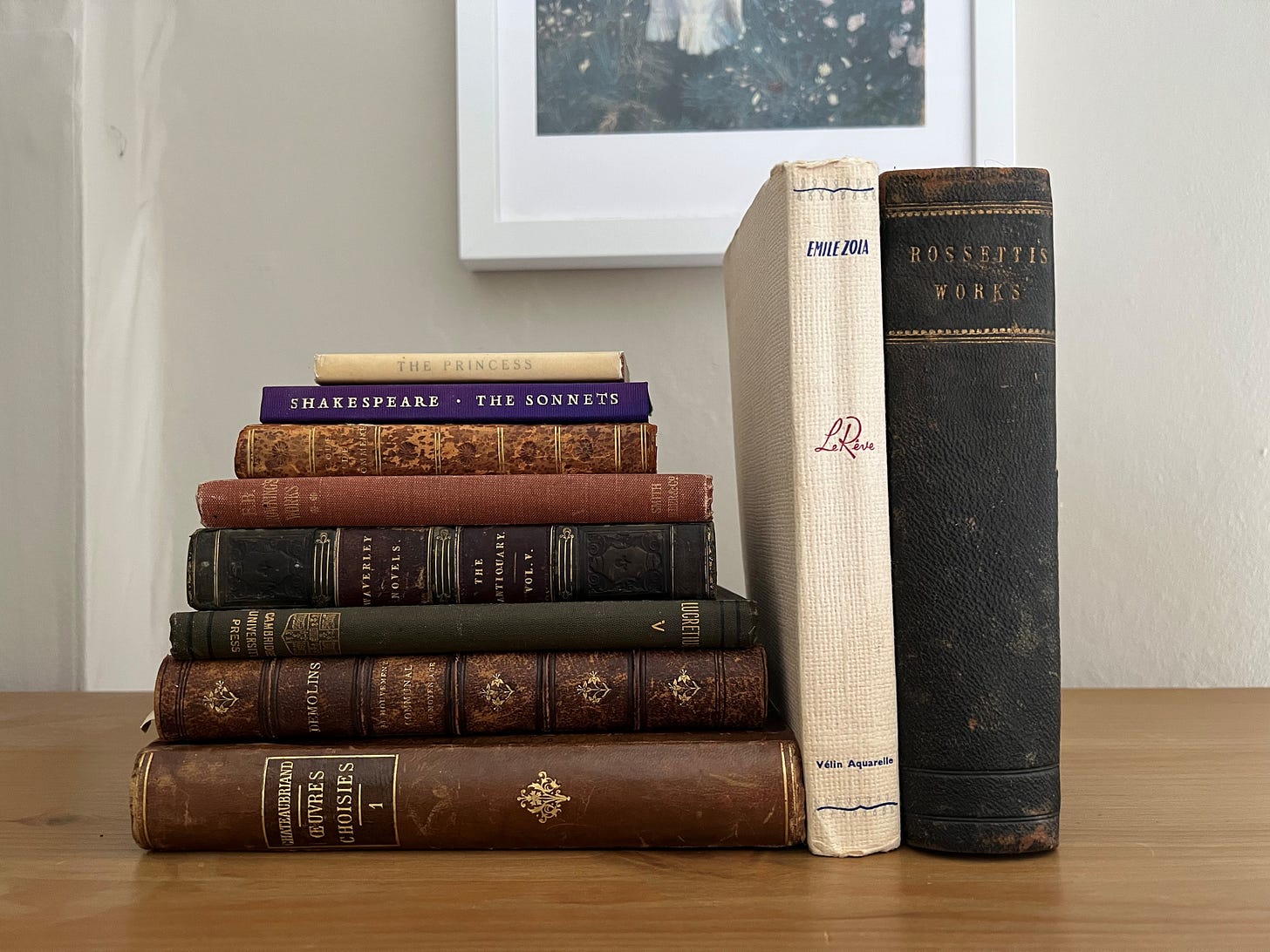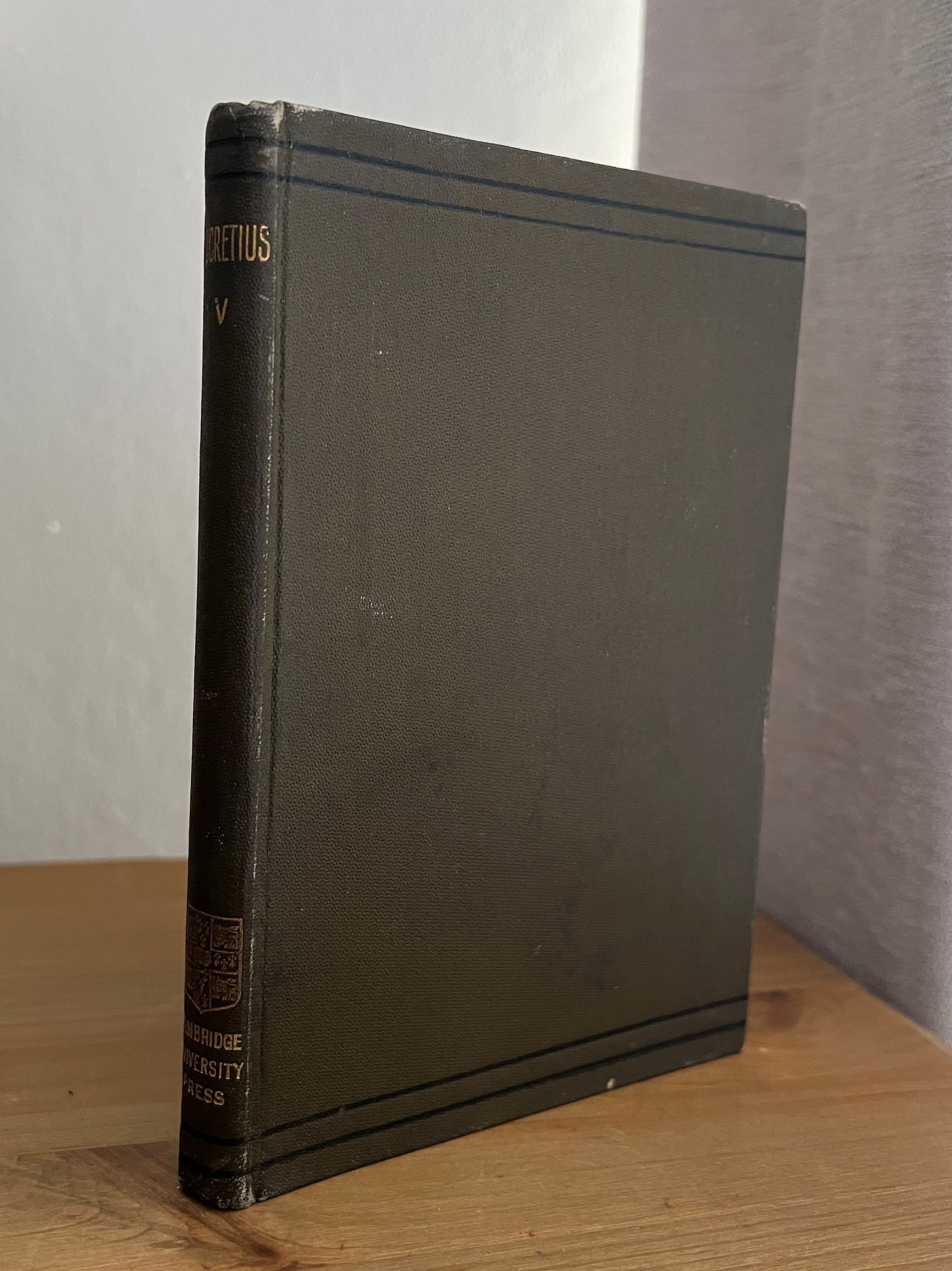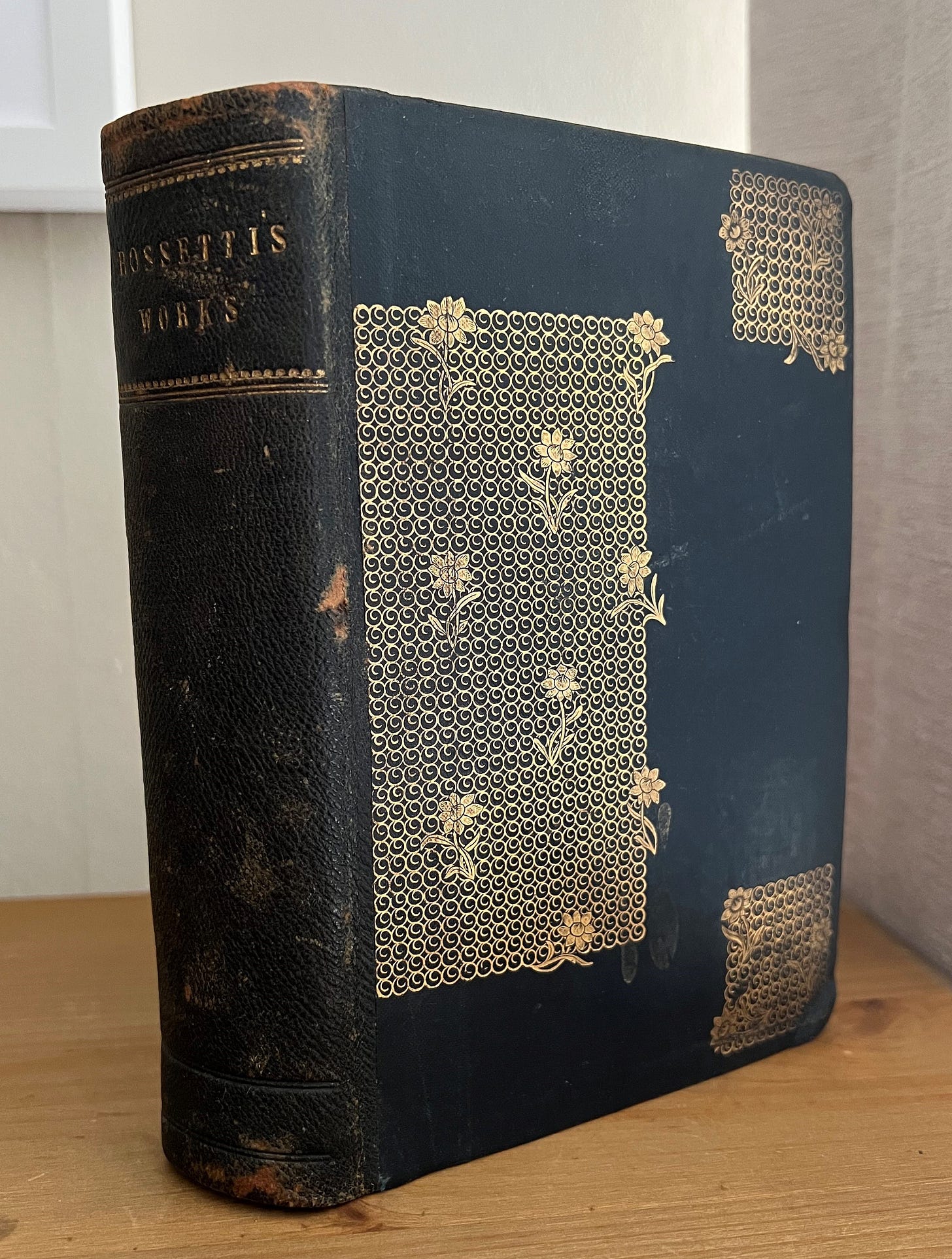Hi all, and welcome back to rumblewrites. This week’s article is a follow up to my post last year about the beauty of rare books, where I talked about what they are, why I collect, and I showed you 2 books from my own collection. You can read that post here. This time, since I’ve bought even more books, I’ll be taking you through 3 more! I hope you enjoy, and remember to subscribe for more:
Here’s my collection, in all its glory:
De Rerum Natura vol V, by Lucretius
Published 1909, Cambridge University Press
I picked this volume up from the basement floor of Waterstones in Gower Street, London for just £10. It is the fifth of a six-volume series and, by all accounts, is the best. Its well-formed ideas and sequential explanation of the origins of the world, life, and human society, make it a good starting point for those wishing to study Epicureanism.
Epicureanism is a philosophical system based on the teachings of Epicurus, an ancient Greek philosopher. It was founded around 300BCE, and focused heavily on the physics of atomism and materialism. It encouraged a religious skepticism, and challenged other philosophical systems like Platonism and Stoicism.
Little is known about Lucretius himself, but his poem De Rerum Natura was the first known transmission of Epicureanism to a Roman audience. It covers topics like the nature of the mind and the soul, the development of the world, and an explantion of both celestial and terrestrial phenomena. Most interesting to me, however, is Lucretius’ description of atomism, contained in this fifth volume. Epicrueus believed that the world was made up of 2 componants: body and void. Body is made up of atoms, too small for the human eye to see but present in everything, and constantly in movement.
The Antiquarian (Waverley Novels), by Sir Walter Scott
Published 1829, Simpkin and Marshell
I found this in a secondhand bookshop in Dorset for only £5. First published in 1816, The Antiquary is the third of Scott’s Waverley novels, so-called because he did not claim authorship of his books until 1827. The first of his novels was called Waverley, so every subsequent book was published under ‘the author of Waverley’. These books were among the most popular and widely-read in Europe for about a century.
The Antiquary focuses on a character named Oldbuck, an amateur historian, archeology, and collector. It is Scott’s favourite of his own works, and aims to showcase the reality of Scottish life in the late eighteenth century.
My copy is the third edition of this book. It contains an additional introduction and notes, as well as a revised version of the text, all produced by Scott himself. It is colloquially known as his ‘Magnum opus’ edition.
Rossetti’s Works, Dante Gabriel Rossetti
Published in 1897, Ellis and Elvy
The final book I want to talk about today is The Collected Works of Dante Gabriel Rossetti, Volume 1: Poems, Prose-Tales and Literary Papers. This was a birthday gift from my boyfriend ♡
Rossetti was an English poet, illustrator, painter, translator, and co-founder of the Pre-Raphaelite Brotherhood. His early poetry was influenced by Romantics like John Keats and William Blake, but he soon found his own style, and largely focused on exploring the interconnection between thought and feeling.
He was also interested in combining his literary pursuits with his artistic ones. He often paired poetry with paintings or other designs, both for himself and his sister Christina Rossetti. This interest is evident here too, as Rossetti designed the floral motifs decorating the book cover himself.








